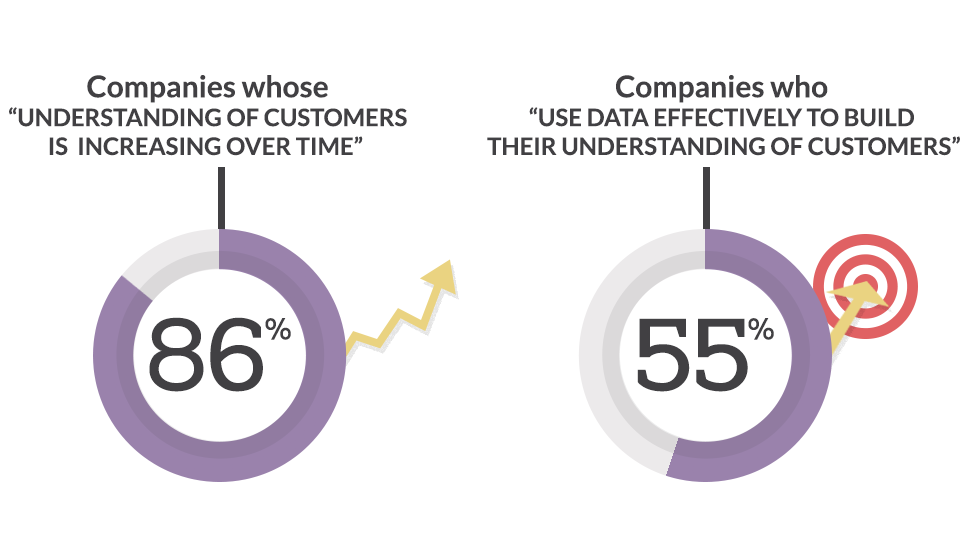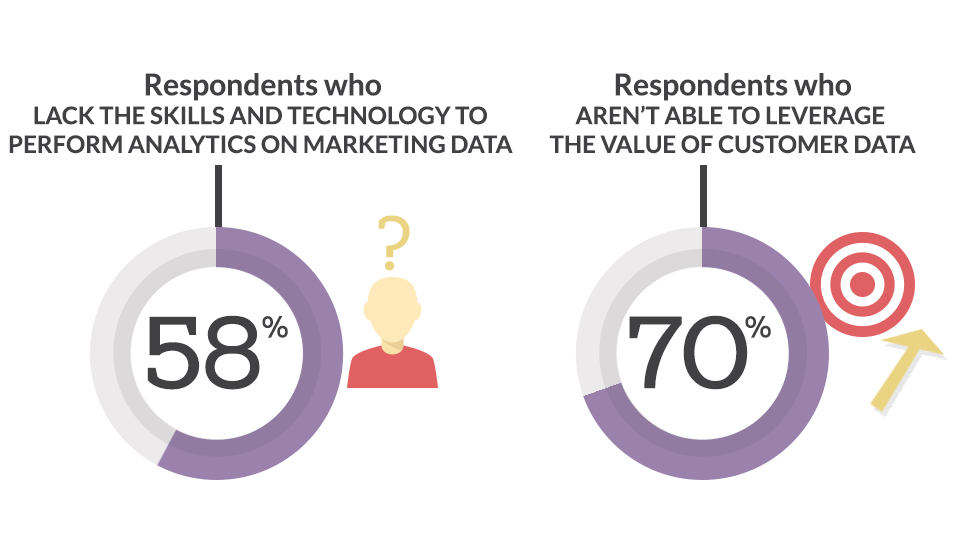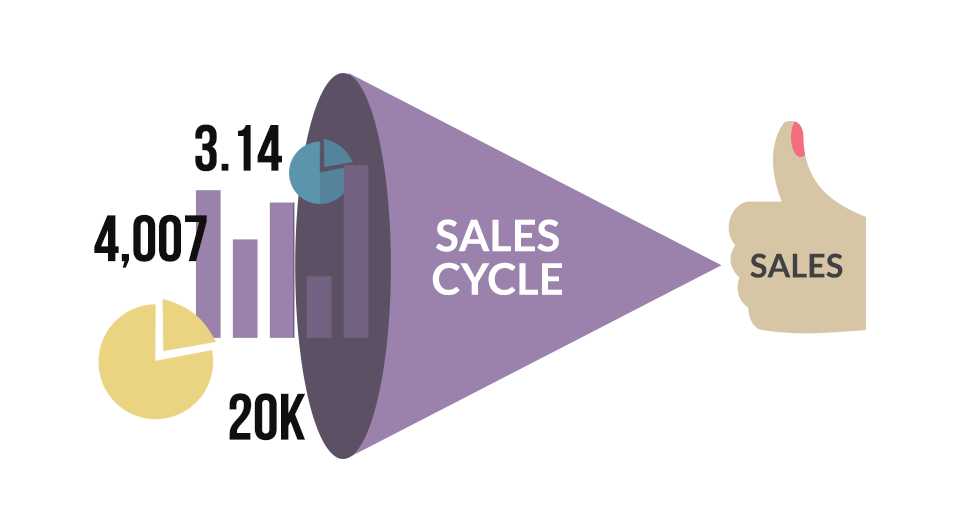
With everyone from Facebook to supergroup-esque companies like Captiv8 offering analytics platforms, the numbers and what they mean can be overwhelming. In content marketing and content strategy, we know analytics are important and we should pay attention to them, but why? What do they show us?
Let’s begin with the definition:
The field of data analysis. Analytics often involves studying past historical data to research potential trends, to analyze the effects of certain decisions or events, or to evaluate the performance of a given tool or scenario. The goal of analytics is to improve the business by gaining knowledge which can be used to make improvements or changes.
Ultimately, analytics are crucial for content marketers and content strategists to understand the makeup of their client, reader, and customer base and the journeys of those users. And much like the definition states, that knowledge can be used to make improvements or changes.
The vast majority (86%) of our surveyed companies indicate that their “understanding of customers is increasing over time,” while more than half (55%) “use data effectively to build their understanding of customers.” – eConsultancy
From that same eConsultancy article, “Research further suggests that organizations are actively attempting to turn their insights into action, with 60% of companies saying they “change and adapt marketing strategy based on customer insight.” Based on that insight, content practitioners and strategists have the power to change content accordingly. You can see what readers and customers are responding to. Analytics provide important information, giving a direct link to what your user base wants to read, buy, and share. This information is vital for filling out content gaps and utilizing metadata effectively.
For the content itself, analytics aren’t just the beginning, but they are the middle and the end as well. Not only is it important to know which topics cause the audience to engage and which ones cause them to drift away, but they are also essential to knowing through which paths the consumers found the content. – Alan Segal, VP of analytics and audience development at CNN and former Sr. Director of Analytics, Insights and Optimization at Cox Media
According to Adobe’s Mike Barton, “If interaction metrics tell us what food was ordered and delivered to the table, engagement metrics tell us how much the customers enjoyed the meal of content received.” Obviously, both types of data are important–he also includes value metrics in his reporting for Adobe–but engagement metrics certainly reveal deeper insights than just looking at traffic and visitor stats.
The demand for roles such as content marketers, content analysts, and content engineers continues to grow–and that trend will not slow down as the need for increased content intelligence is critical. In fact, Content Marketing Institute urges that Chief Content Officers should have leadership experience related to analytics and a working knowledge of web analytics tools.
90% of large organizations will have a Chief Data Officer by 2019. – Gartner
Today’s businesses need to employ people to make sense of what the analytics are telling them.
In the survey, 58% of respondents said they lacked the skills and technology to perform analytics on marketing data, and more than 70% said they aren’t able to leverage the value of customer data. – Pew Research Center
This will continue to be an Achilles’ heel for companies that do not hire people with these skills or fail to train current employees about the importance of data-driven content decisions since the data we create and copy annually is projected to reach 44 trillion gigabytes by 2020. To keep up, 60% of Chief Information Officers expect to increase their spending on big data analytics this year.
44% of marketers say their organizations do not measure content marketing ROI. – B2B Content Marketing 2020 Benchmarks, Budgets and Trends
With the recent estimates of IoT financial impact being in the trillions of dollars and 27 billion IoT sensors existing by 2025, big data is getting exponentially bigger and data analytics is becoming increasingly important and complex. Big data and analytic platforms are big business. Google Analytics, Moz and Adobe Analytics were leaders in G2 Crowd’s report for digital analytics platforms. Google Analytics and others provide free ways to measure your content’s effectiveness. Content Science’s subsidiary, ContentWRX performs analytics that measure content success. Additionally, technology advancement exists with products like Domo, which offers improved access to real-time data can help users save time and improve decision making.
As Deloitte notes, spending on marketing analytics is expected to increase 200% over the next three years. Nearly a third of CMO budgets are allocated to marketing technology, according to Gartner’s CMO Spend Survey 2018, while 1 in 6 marketing dollars is spent on innovation.
Sales are one frontier where analytics can “power up revenue.” The role of predictive analytics in B2B marketing is game changing.
B2B companies deploying predictive analysis for their use are doing well compared to their competitors and are well on their way to understanding their customers and their needs better by personalizing content to suit their needs. – CIO Review
In her book, “The Content Advantage,” Content Science CEO Colleen Jones writes this about the importance of analytics:
“Few things persuade people more than a clear comparison of before and after. The evidence is indisputable. The analysis of your current state can give you a number of “before” benchmarks—such as content effectiveness, content operations maturity level, or even the number of content assets—that set the stage for a compelling before and after story.”
For content marketers and content strategists, measuring your content with analytics is one critical part of the content process. However, in order for analytics to work effectively, you must be able to understand and apply the data to your content. Tracking what people do with your content or as a result of experiencing your content is the key to understanding whether your content is truly effective.
Events, Resources, + More
New Data: Content Ops + AI
Get the latest report from the world's largest study of content operations. Benchmarks, success factors, commentary, + more!
The Ultimate Guide to End-to-End Content
Discover why + how an end-to-end approach is critical in the age of AI with this comprehensive white paper.
The Content Advantage Book
The much-anticipated third edition of the highly rated book by Colleen Jones is available at book retailers worldwide. Learn more!
20 Signs of a Content Problem in a High-Stakes Initiative
Use this white paper to diagnose the problem so you can achieve the right solution faster.









Comments
We invite you to share your perspective in a constructive way. To comment, please sign in or register. Our moderating team will review all comments and may edit them for clarity. Our team also may delete comments that are off-topic or disrespectful. All postings become the property of
Content Science Review.